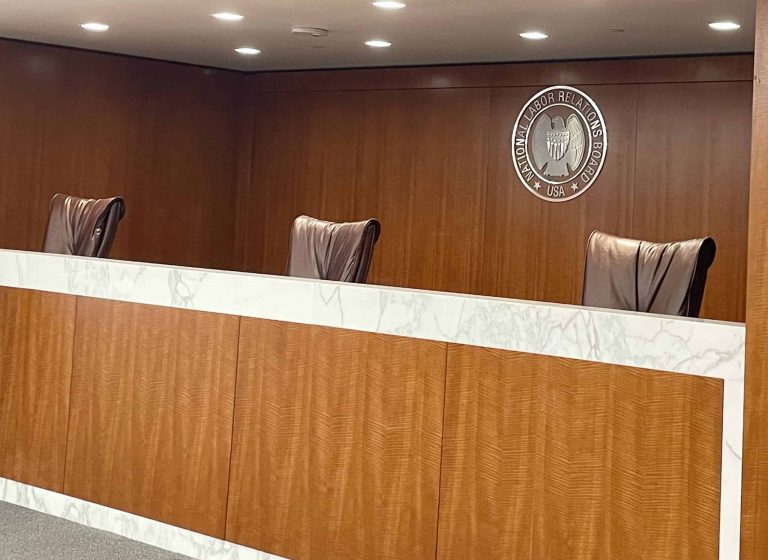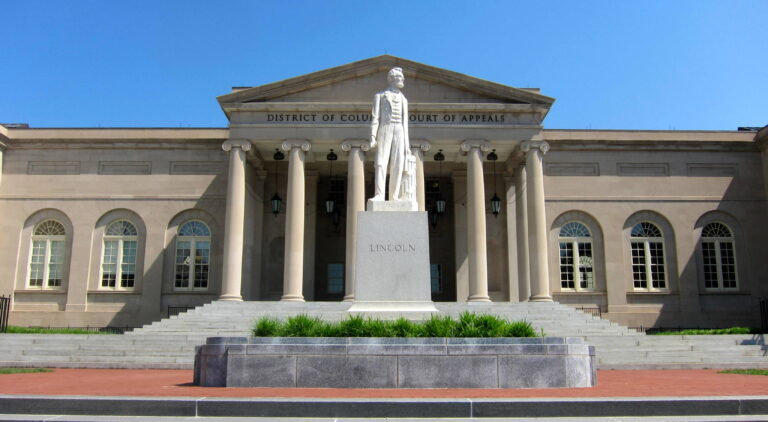
Sharon Block is a Professor of Practice and the Executive Director of the Center for Labor and a Just Economy at Harvard Law School.

Rajesh Nayak is a Fellow at the Center for Labor and a Just Economy at Harvard Law School and former Assistant Secretary for Policy at the US Department of Labor.
The Supreme Court has done a lot of big things in the past couple of years – created immunity from prosecution for presidents, rolled back the right to access abortion care and expanded access to guns. But possibly the biggest change the Court has wrought is laying the groundwork to profoundly constrain the ability of our national government to ensure basic protections across a range of contexts: for workers, consumers, the environment, to name just a few examples.
The idea that the federal government should have a significant role in providing a basic level of decency in our lives really began in the New Deal. Campaigning for his first term as president in 1932, Franklin Roosevelt made the case for a federal backstop for our wellbeing. In his stump speech, he argued that the federal government has a “continuous responsibility for human welfare . . . That duty and responsibility the federal government should carry out promptly, fearlessly, and generously.” He made good on that vision, particularly in protecting the economic wellbeing of all Americans. He made the first ever federal minimum wage and overtime law the centerpiece of his New Deal.
Roosevelt set a pattern that has been repeated in the almost 90 years since the New Deal. When it comes to workers’ rights, for example, the pattern has three parts: federal legislation that sets a basic floor for protecting workers’ wellbeing, federal agencies that then fill in and adapt the details of these protections as time goes by, and states that are left to go above and beyond these basic federal levels of protections in most areas. This three-part pattern has proved to be remarkably responsive, dynamic and adaptive. Democratic and Republican administrations alike were tasked with updating regulations and even innovating in the face of new challenges and changing contexts to meet Congress’s original goals, and red states and blue states could choose whether or not to build from the federal floor.
Here’s an example. In 1938, Congress passed the Fair Labor Standards Act, which established the right to a minimum wage and overtime pay. The statute also empowered the U.S. Department of Labor to set rules to define exactly who was entitled to these protections and how to make the necessary calculations of what hours count as work time and how to figure out precisely how much someone has to be paid. In Democratic administrations, DOL tends to take a more expansive view of who is entitled to these protections, and during Republican administrations the agency tends to take a somewhat narrower view. Some states have stepped in from time to time to extend protections even further – as when Washington state enacted rules in 2020 substantially raising the salary a worker must be paid to be exempt from the right to overtime pay.
Over the past few terms, the Supreme Court has upended this system. In a series of cases, the Court has cut the middle step out of the pattern. In cases like West Virginia v. EPA, NFIB v. OSHA, Loper Bright Enterprises v. Raimondo and Corner Post v. Board of Governors of the Federal Reserve System, the Court has imposed such onerous constraints on federal agencies’ authority to interpret laws passed by Congress that the whole system is in danger of collapsing. When it comes to most rulemaking, courts have long deferred agency expertise when the laws Congress passes are ambiguous. But after this term, in applying Loper Bright, courts may find agencies’ interpretations of the laws they enforce to be just “especially informative,” but they have carte blanche to substitute their own judgement despite their lack of expertise. And Corner Post makes it easier for litigants to reopen such challenges against regulations years or decades after they were enacted, holding that the statute of limitations begins anew for every new company subject to a rule. Even the uncertainty – and rush of litigation – unleashed by these cases could have a profound chilling effect on future agency action. With the system’s collapse will come the collapse of federal agencies’ ability to provide that “prompt, fearless and generous” protection for human welfare that we have come to rely on.
But we do not just have to stand around and survey the wreckage. The Court’s kneecapping of the federal government’s ability to govern shifts responsibility to states to fill in the gaps. Instead of playing a supporting role, state governments must now more than ever play a starring role in protecting workers’ rights. There are two priority areas where states have a history of picking up the slack, and can do so again: protecting wages and ensuring safe workplaces.
Let’s start with protecting wages. The good news is that states have a long history of advancing minimum wage laws even before the federal law was passed, and have been the exclusive drivers of minimum wage increases in the 15 years since the last federal increase took effect. A recent report from Oxfam shows that a historically small percentage of American workers rely on the appallingly low federal minimum wage of $7.25 per hour. Instead, states across the country have enacted laws to raise their minimum wages to $15 per hour and above. States need to go further. And as the Biden Administration is running into the Supreme Court’s buzz saw in trying to expand who gets overtime, more states should be using their authority to accomplish this expansion.
Next, more states can pick up the slack in ensuring safe workplaces. The Biden Administration has announced plans to require employers to protect workers from the devastating heat that too many are laboring under as a result of the climate crisis. But industry groups have already vowed to use the new Supreme Court precedent to stop this regulation. Congress gives states the right, however, to have their own programs to protect workers from occupational hazards like heat, and at least five states ranging from California to Minnesota have already enacted such standards. More states need to take advantage of that opportunity so workers don’t have to worry about whether corporate interests will be successful in using the courts to knock out any future federal rule.
This fallback to relying on states to protect workers is not a panacea. To be sure, it is a less-than-perfect substitute. First and most importantly, it is unlikely to be a strategy taken up by red state governors and legislatures. (Florida has gone a step farther and blocked local protections against extreme heat.) That means that too many Americans will continue to bear the impact of the Court’s miserly jurisprudence. Second, it means a shift in resource burdens to the states from the federal government. When states take on these regulatory responsibilities, it costs them money because it isn’t enough to pass laws – those laws have to be enforced. And enforcement is expensive. But the Supreme Court has left too much slack in the system to ignore. Our best hope is for states to pick it up.










Daily News & Commentary
Start your day with our roundup of the latest labor developments. See all
December 22
Worker-friendly legislation enacted in New York; UW Professor wins free speech case; Trucking company ordered to pay $23 million to Teamsters.
December 21
Argentine unions march against labor law reform; WNBA players vote to authorize a strike; and the NLRB prepares to clear its backlog.
December 19
Labor law professors file an amici curiae and the NLRB regains quorum.
December 18
New Jersey adopts disparate impact rules; Teamsters oppose railroad merger; court pauses more shutdown layoffs.
December 17
The TSA suspends a labor union representing 47,000 officers for a second time; the Trump administration seeks to recruit over 1,000 artificial intelligence experts to the federal workforce; and the New York Times reports on the tumultuous changes that U.S. labor relations has seen over the past year.
December 16
Second Circuit affirms dismissal of former collegiate athletes’ antitrust suit; UPS will invest $120 million in truck-unloading robots; Sharon Block argues there are reasons for optimism about labor’s future.